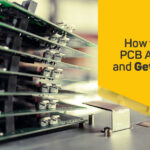Top PCB Design Consideration for Aerospace Assembly and Military Grade PCB!

Aerospace assembly and military PCBs are expected to be tough and reliable and there is no room for any error especially when the systems are mission ready. Imagine your system results in a technical glitch during critical mission operations. This would have some serious repercussions and damage beyond measure, isn’t it? You need not only quality systems but also reliable, secure, and strong that show the same performance for a longer time.
This isn’t as easy as it seems, in fact, it is quite challenging to manufacture and deploy PCBs for military and aerospace when compared to commercial applications. Deep knowledge and understanding of what entail in the high-reliability circuit boards are essential for the longevity of the products. Most people find it difficult and hence focus on finding an electronic company that maintains quality standards and has enough experience to handle the design demands of these projects.
Before we discuss some design considerations, remember one cardinal principle – keep learning! Yes, there is always something new out there – new technologies, new working processes, or new testing options. If your aim is to produce high-quality products, install innovation at every step. Ok, let’s get started.
1. Prepare a quick Layout of PCB Designs
Designing for PCB military and aerospace assembly involves a wide array of design options, materials, and carefully curated manufacturing processes. Before you jump into the design, understand how harsh environments wreak havoc on your PCBs and prepare some tips to safeguard them from being ruined. This ensures reliability and safe-operating boards for the years to come. You can get quick sketches of the designs before they hit the production floor.
2. Construction Materials
Aerospace and military grade PCBs must be strong, durable, and reliable to the extreme temperatures and harsh conditions. A PCB manufacturer must be skilled and have expertise in different materials, composites, and substrates. Materials like aluminum and copper can be used to withstand extreme heat. Anodized aluminum is also used for minimizing the heat-induced oxidation effects.
3. Coating and Surface Finishes
Special surface coating and finishes are mandatory during PCB Assembly for military and aerospace applications. This acts as a protective shield in harsh environmental conditions like heat, humidity, vibration, and water. You can also use thermal compounds that will insulate components, protect them from heat, and reduce vibrations that result in solder cracks. Use high-quality acid or acrylic-based sprays can be used to coat the boards. Another option is using immersion silver for surface finishes.
4. Through-hole PCB Assembly
Through-hole technology (THT) is the best way of mounting during PCB assembly as boards manufactured with THT are highly durable. This is due to the soldering from both the top and bottom of the board that creates very strong physical bonds between both the board and components. Your PCB manufacturer must be able to minimize vibrations while mounting the components.
5. Meet High Standards
Military and aerospace electronic products typically need to meet high standards for better performance. For instance, IPC, the global trade association that has been serving the PCBs and electronic assembly industries has laid down the IPC-A-610E standard for high-performance products. Its goal is to make sure there is no downtime, no critical issues in end-use environments so that the equipment works well under all harsh environmental conditions.
6. Less about design and more about PCB Manufacturing
Yes, you heard it right! When your aim is to build robust products that are less prone to failure, manufacturing details matter the most. Different manufacturers design the same products with subtle changes and hence it’s not always about design. Your PCB designs should fit the manufacturing process for yielding better results. You can use automated tools for identifying the differences between the components and designers can also verify that the manufacturer’s methods will not result in performance compromises.
7. Avoid Counterfeit Parts
Counterfeiting can lead to product failures and revenue loss which would affect the PCB assembly process critically especially when you are fulfilling military and aerospace contracts. You can avoid counterfeiting by choosing a proper PCB contract manufacturer who is well-versed with the procedure and practices certified processes such as avoiding fraudulent distributions and doing source assessments. They should have a trusted and well-vetted chain of suppliers to guarantee the quality of PCBs.
8. Qualified PCB Manufacturer
The PCB manufacturer you choose must have the capabilities and necessary certifications for handling military and aerospace electronics systems. The certifications are indicators of your CM’s commitment to quality. For instance, the International Traffic in Arms Regulation (ITAR) regulated by the Department of State is required for military and aerospace appliances. It mandates that your PCBs must adhere to the updated guidelines to reflect changes in the current technological trends, political as well as security climates. Any sensitive information relating to the design and production of these intelligence devices should be protected. This degree of security ensures trust in the manufacturer.
9. Test with DFM
The Military and aerospace PCBs should be tested with Design for manufacturability (DFM) after making even the slightest of the changes. You can use x-ray tests as the standard for all your military and aerospace electronics. Device a test strategy for your PCB designs that suits your time and budget. Are you considering physical tests like the Highly Accelerated Life Test (HALT)? Beware that it will destroy your prototype. Choose alternatives like virtual HALT simulation and run a few test iterations.
10. Identify your Failures
While running the tests, the focus should be on analyzing the results for understanding the defects and finding out the source of the defect. Allot time and effort to analyze real-time failures of your products and establish some working methods to prevent these failures to be recurring in the future. It is important to investigate the cause of failure starting with the source of the failure and observe how they behave under different simulations. You can also rely on data mining to understand the stability of your designs. Instead of focusing on the immediate and short-term solutions, drive your efforts on conducting research and finding conclusions. This comes in handy even for your future designs.
Conclusion
The military and aerospace electronics industry should show fewer product failures and uncompromised quality as design complexities increase. Measures should be taken to build stable and high-quality products within the stipulated time. How to go about it then? The decision in this direction starts with picking up the right electronics company that has adequate experience in designing a tough product.
Mermar Electronics is one such organization that has highly skilled engineers building high-quality printed circuit boards, assemblies, prototyping, fabrication, turnkey PCB assemblies with proper design considerations. You can count on us to meet and exceed your Aerospace PCBs needs. We are ever committed to staying ahead of the curve, when it comes to meeting the growing demand for evolved PCBs.
Explore Different types of Aerospace PCB Assembly Services from here!








